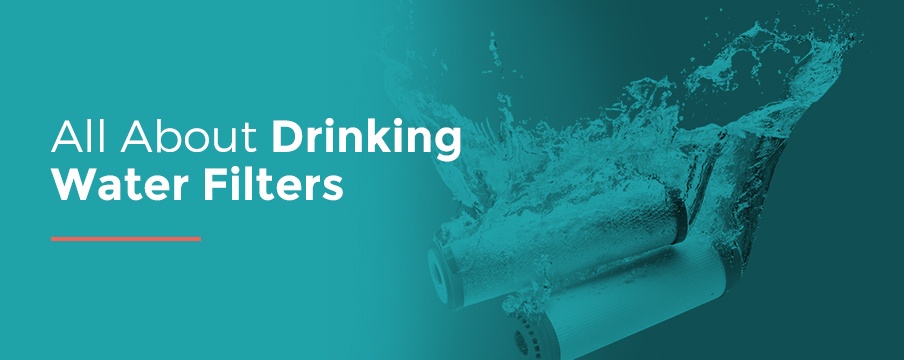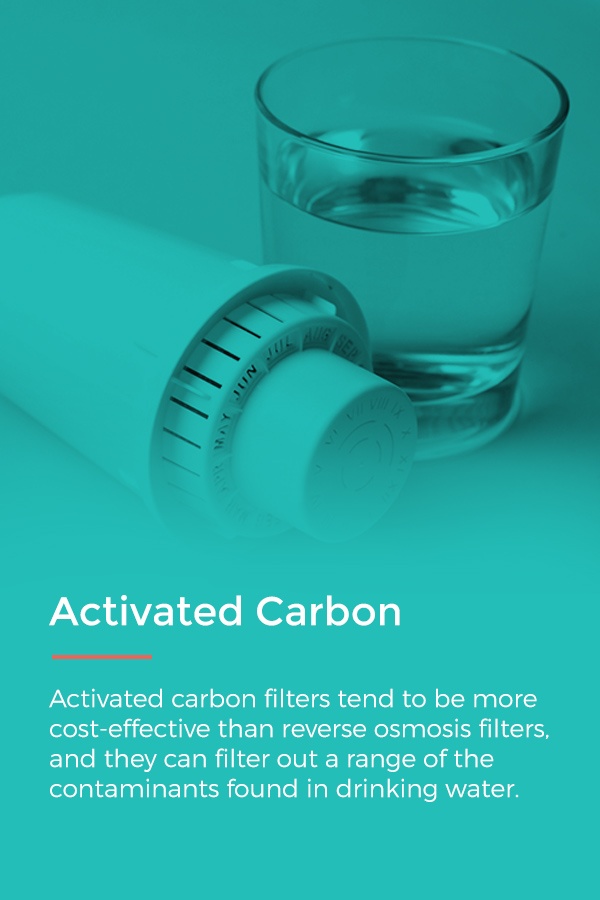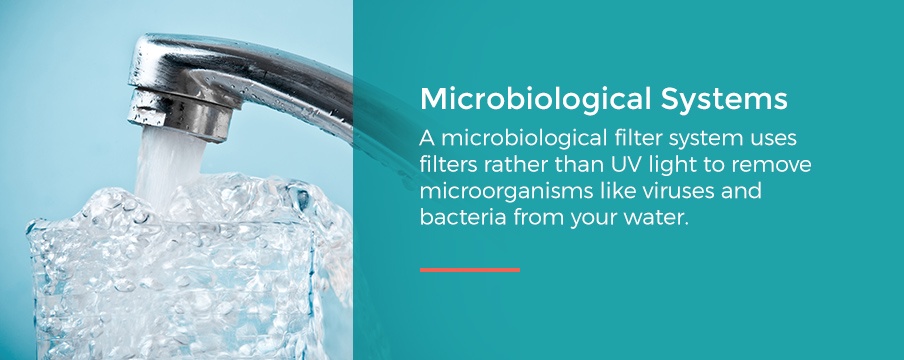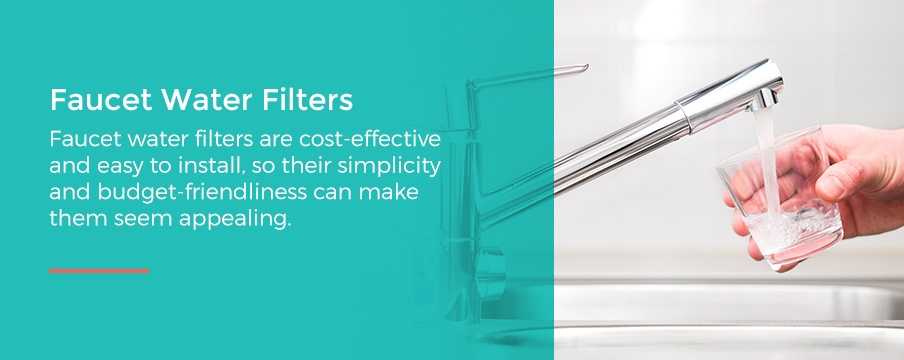
Drinking lots of water to stay healthy and hydrated is essential — but what if your home’s drinking water smells bad or has a weird taste? Or what if you’re worried that your water could make you sick? Odors, unpleasant tastes, spots on your dishes, dry skin and dull hair, stains on your bathroom fixtures, buildup in your pipes, even repeated gastrointestinal illness — all of these can be signs that you need to address the contaminants in your water.
Drinking water contains more chemical contaminants than many people realize. The New York Times reports that under the Safe Drinking Water Act, only 91 chemicals are regulated, even though more than 60,000 chemicals are in use throughout the United States. Not a single chemical has been added to the regulated list since 2000. Additionally, many of the act’s standards have remained unchanged since the 1980s — some even remain unchanged since the act’s passage in 1974.
The pollutants found in drinking water can include vehicle emissions, heavy metals, pesticides, pharmaceuticals, detergents, industrial waste and much more. A recent three-year study found 202 unregulated chemicals in the drinking water of 45 different states, as well as 326 total contaminants across 20 million drinking water samples.In total, over 62 million Americans have been exposed to drinking water that failed to meet at least one government health guideline intended to help protect the public from disease. Some people were exposed to unsafe water for years.
Drinking water filters can help reduce the number of contaminants in your water. But what’s in water filters and what do they do? Below, we’ll explain more about the different types of water filters and help you understand how water filters work to keep your water clean and your household safe.
Drinking Water Filtration Methods
How do water filters work? Below you’ll find a few different types of drinking water filter technology and explanations of how they clean your water.
1. Activated Carbon

Activated carbon is commonly used in water filters. Activated carbon is carbon that has been treated with oxygen to maximize the number of pores it contains. The large number of pores give the carbon an expansive surface area over which it can adsorb — or bind on its surface — many of the contaminants found in drinking water. Because of its high porosity, one pound of activated carbon contains a surface area of up to 100 acres. Activated carbon filters are often made from coal, wood, or high-carbon nut shells such as coconut shells.
Activated carbon can filter out a range of the contaminants found in drinking water, including metals like copper and lead, cleaning solvents, pesticides, chlorination byproducts and more. Faucet water filters, pitcher water filters and under-sink water filters all typically use carbon filters. Some carbon filters also contain silver to help inhibit the growth of harmful bacteria.
2. Reverse Osmosis
Reverse Osmosis water filters offer powerful water filtration capabilities. Osmosis means the flow of water into an area with a higher concentration of solids. But you don’t want suspended solids in your drinking water — so with reverse osmosis, your water is forced through a semipermeable membrane that traps suspended solids and leaves you with fresh, clean water.
Reverse osmosis typically works through three simple steps:
- Water flows through a pre-filter, which removes sediment, chlorine and small particulates.
- High pressure forces the water through the semipermeable membrane that traps most of the remaining inorganic contaminants and flushes them to the drain. Long’s EcoWater Reverse Osmosis Systems can remove 99.3% of lead at this stage, for example.
- A storage tank holds the filtered water. The storage tank contains an activated carbon filter that removes a few remaining impurities as the water flows out toward the faucet. This last filtration step means that the water tastes and smells fresh when it reaches your glass.
Reverse Osmosis Systems can be more expensive than systems that use activated carbon filters alone. However, they are generally more effective and their reliable results make them an excellent choice for home water treatment systems. They remove all the heavy metals and chemicals that carbon filters do plus bacteria, viruses, and other harmful contaminants.
3. Ultraviolet (UV) Light
UV sterilization is used for well water purification, removing bacterial microorganisms (total chloroform and E.coli).
Many types of water purifiers make use of absorption techniques to remove chemical contaminants, but UV purification is different. UV light filters purify water with wavelengths of ultraviolet light. Instead of removing particles the way reverse osmosis and activated carbon filters do, they disinfect the water by concentrating and directing ultraviolet light through a glass fixture, much like the way you can use a magnifying glass to focus light and start a fire. These systems are incredibly effective at killing harmful bacteria that can cause gastrointestinal illnesses.
UV light filters do not remove nonliving contaminants such as heavy metals and chemicals, though. For this reason, homes often use them in combination with reverse osmosis or carbon filter systems.
4. Microbiological Systems

A Microbiological Filter System uses filters rather than UV light to remove microorganisms like viruses and bacteria from your water. These types of water filters are particularly effective for those with public water as they protect against Giardia, Cryptosporidium, and many other harmful pathogens. At Long’s Ecowater, our Microbiological Purification Systems are guaranteed to remove 99.9999% of bacteria, 99.99% of viruses and 99.95% of cysts, which are microorganisms in their dormant stage. When Cryptosporidium exists in water, it is often found as cysts.
In our Microbiological Filter Systems, water first flows through a pre-filter that filters out lead, chlorine and sediment to give your water a clean, crisp taste and smell. The water then flows through the purifying filter, which traps and removes harmful microorganisms. The purifying filter helps remove up to 53 types of VOCs from the water as well.
5. Ion Exchange
Ion exchange is used primarily for water softening. Hard water, which contains heavy concentrations of calcium and magnesium, can leave skin feeling irritated and hair feeling weighed down with a buildup of residue. Hard water can also have a tang that makes water unappealing to drink and can lead to mineral deposits in pipes.
Ion exchange helps solve this problem using resin, which has a small, bead-like surface. The resin is covered with ions, which are particles with positive electrical charges.
Water softening works through the exchange of cations — particles that are positively charged. A cation exchange resin might be covered with sodium cations, for instance, which is why water softeners use salt. When magnesium and calcium ions pass over the resin, the sodium cations trade places with the magnesium and calcium cations, and the magnesium and calcium cations bind to the resin. The removal of these cations gives your home’s water a cleaner taste and better feeling.
This process works to remove some other contaminants as well, primarily through anion exchange. Anions are negatively charged particles — anion exchange resins might make use of chloride anions, for instance. Anion exchange can help rid homes of contaminants such as fluoride, sulfates, nitrates, arsenic and more.
Certain types of ion exchange systems can be expensive. Additionally, it requires regular delivery and addition of salts and other substances to your home’s water supply. Currently, this is the only effective way to soften hard water.
6. Distillation
A water distillation system heats water to turn it into vapor, which leaves behind impurities like bacteria, viruses, heavy metals and many chemicals as it rises. The distiller then condenses the vapor back into clean, clear water. Because they remove a variety of different contaminants, and because of their high efficiency, distillers can be an attractive option for some households. They are typically installed in homes as countertop units.
If chemicals have a higher boiling point than that of water, though, they will vaporize along with the water, so distillation systems cannot rid your water of them. Chlorine is one of these chemicals, so distillers are ineffective against chlorine. Additionally, distillation systems use substantial amounts of energy and need high levels of maintenance to keep functioning at their best. They are also quite slow, taking several hours to produce a modest volume of water.
Types of Drinking Water Filters
Now that we’ve discussed different types of water filtration technology, we’ll discuss a few water filtration products and systems as well.
1. Filtered Water Pitchers
Filtered water pitchers generally contain activated carbon filters. They are budget-friendly, and they sit on your table or counter or in your fridge, so there’s no installation involved.
Filtered water pitchers have an upper chamber filled with activated carbon. You can pour water into this chamber, and it will filter down into a larger reservoir from which you can pour it out. Simply fill up the pitcher and then pour out filtered water when you need it. The user-friendliness, portability and cost-effectiveness of filtered water pitchers can make them seem like attractive options.
However, the small filters of filtered water pitchers can easily clog, and the pitchers may also pour slowly, letting out a meager trickle of water instead of a refreshing stream. Their smaller filters also need to be changed more often than the filters of the larger systems. It is difficult to use these pitchers for other uses, such as cooking. Additionally, the carbon filters used by these companies are typically lower-quality.
2. Faucet Water Filters

Faucet water filters, as their name suggests, attach directly to the end of your faucet. You can use them in your kitchen to filter your water as it comes out of the tap. Faucet water filters are cost-effective and easy to install, so their simplicity and budget-friendliness can make them seem appealing.
However, they don’t fit every style of faucet, so if you have a uniquely shaped faucet, especially one set lower than most, you may be out of luck. They can also impede the flow of water, causing your cups and water bottles to fill more slowly. Quality may be an issue with these smaller carbon filters, which do require relatively frequent changing.
3. Countertop Water Filters
Countertop water filters connect to your kitchen faucet, but they sit on the counter instead of attaching to the faucet head. They often come with their own slender faucets through which the filtered water can flow. They are less likely than the smaller models to clog or impede the rate of water flow, and they require fewer filter changes as well. And they can be more convenient than a pitcher that requires constant refilling.
They do take up counter space, however, so people with smaller kitchens may want to consider other styles. They also don’t work with every model of faucet.
4. Under-Sink Water Filters
Instead of screwing into the faucet, under-sink water filters connect to the water line beneath the kitchen sink. They usually make use of either reverse osmosis technology — to remove arsenic, lead, fluoride, chlorine and other inorganic contaminants — or microbiological filters to focus on eliminating bacteria and viruses, plus lead, chlorine, pharmaceuticals and more.
Under-sink water filters usually require professional installation, and that can make them cost a bit more than the smaller models. Once installed, though, they are more convenient to work with because they require fewer filter changes than the smaller models like filtered water pitchers and faucet water filters. High quality and convenience make them excellent choices for your home.
5. Whole-House Water Filters
Whole-house water filtration systems are installed directly at the main water pipe. They purify the water at its source and allow for the distribution of clean, filtered water to all areas of the house. This efficient distribution means you don’t have to find and maintain different filters for different faucets and showers. If your water is hard or contains VOCs that can vaporize and be breathed in through shower or bath steam, whole-house water filtration is an excellent choice to protect both your pipes and your health.
Whole-house water filtration systems are typically large and complex, and they can filter an enormous variety of different contaminants, from heavy metals to chemical contaminants to pathogens like viruses, bacteria and cysts. Though they require professional installation and represent a substantial investment, they tend to save households money over the long term.
Many different types of whole-house water filters exist, with technologies ranging from carbon absorption to ion exchange or UV sterilization. So, you can choose the system that bests fits your household’s needs.
Because a whole-house system treats all of your household’s water and protects against the widest variety of contaminants, investing in a whole-house system can provide a variety benefits. They can provide your entire home with clean, safe and healthy water for years.
How to Choose the Right Filter
Which water filtration system is right for your home depends on numerous factors — your water quality, the biochemical properties in your water, your budget, your tolerance for maintenance and many more.
The right choice of filter also depends on your level of water consumption and whether you have well water or municipal water. We recommend getting your water tested so that you know what contaminants it contains. Then you can choose the filtration system that best addresses the discovered issues.
Consult Your Local Water Treatment Professional to Discuss Filtration Options
If you live in Eastern Pennsylvania, within a one-hour radius of our office, including areas like Allentown, Coopersburg, Quakertown, and Macungie, make Long’s EcoWater your trusted, one-stop source for all your water filtration and treatment needs. Our drinking water treatment systems meet or exceed the EPA requirements for the removal of contaminants from drinking water. You can use our systems on both municipal water and well water — no matter what type of water you have, our systems are convenient and effective.
We know how to filter water effectively, and we can provide you with the right water filtration system to solve a variety of home water issues. We even offer a free water test, so we can figure out how to get you water that tastes great and keeps your family healthy and safe.
Contact us today to learn more.

